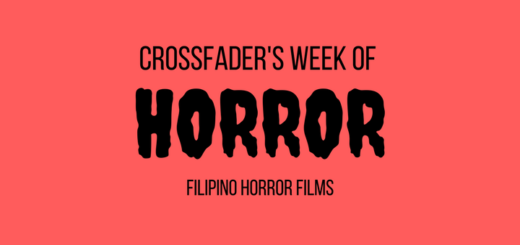What Happened, Miss Amy? A Comparison of the Cultures that Created the Careers of Nina Simone and Amy Winehouse
2015 happened to see the simultaneous release of two highly lauded documentaries depicting the lives of troubled female Jazz singers who achieved high levels of recognition in their lifetimes, despite enormous struggles with addiction, abusive husbands, and plain old mental illness. These artists were of course Nina Simone and Amy Winehouse, and while I’m almost positive I can’t be the first person to point out the bizarre series of circumstances that lead to both of these documentaries coming out in the same year, I hope I’m the first to point out that the differences in the forms their fame took have more to do with the cultures that received them than the musicians themselves.
In truth, Amy Winehouse and Nina Simone are incredibly similar artists. That sentiment may rustle certain feathers within fan circles ‒ but hear me out. Watch these two videos and try to watch them without any presuppositions:
While they’re obviously not identical, there’s an intense precision to both of them; whatever their respective muses may be, they have more in common than in difference. That’s not to say that one artist is necessarily better than the other, though I’m sure plenty of jazz aficionados may become livid at the thought of the political, prolific Simone being compared to an alcoholic junkie who mostly wrote songs about fucking. If you set personal taste aside, however, they were both talented; focused vocalists with life-changing voices and something to say with them. They both owned and celebrated their sexualities in ways that were risque and brave for the time. They both cared very little about fame if it got in the way of their actual music. They both loved terrible men with their whole hearts and created some amazing music about it. For all intents and purposes, they’re the same artist living in two incredibly different eras.
Why AMY and WHAT HAPPENED, MISS SIMONE? are important in tandem as cultural artifacts has less to do with what they tell us about the artists themselves and everything to do with how they were respectively received in the times they were creating art. What they reveal about us as members of modern popular culture is dark and not at all flattering.

You see, Simone may have effectively lost her mind for part of her life, and dealt with the devastating effects of racism and an incredibly abusive husband – I don’t at all intend to downplay the struggles of her life… but as demonstrated in WHAT HAPPENED, MISS SIMONE?, she did ultimately get the chance to live for several decades and create a wide array of incredibly powerful music in that time. Amy Winehouse, by contrast, became famous and was dead within a handful of years, and AMY makes the strong case that her death was directly caused by the media’s relentless hounding of her as a person. Consider how the crowd behaves in this Nina Simone video:
Now watch this clip of paparazzi chasing Amy Winehouse. Nobody ever chased Nina Simone like this. Nobody stood outside Simone’s house every time she stumbled out after a fight with Don Ross. People had the decency to respect Simone as an artist and treat some things as personal and irrelevant to the art they enjoyed and appreciated.
If you haven’t seen AMY, these scenes of paparazzi torment are gut-wrenching. The chaos of her daily life would be absolutely mania-inducing for anyone, but for a person who had already struggled with various forms of addiction, it’s no wonder she dove so deeply into drugs and alcohol to cope with the fame largely thrust upon her against her will. Again, Simone obviously struggled and even met backlash for some of her more controversial music, but that backlash didn’t turn into an all-out assault on every aspect of her and her lifestyle.
Now, the easy thing to do here would be to point fingers at the tabloid media, blame them for being such fiends, and move on, scott free. That’s just not how these things work, however; media turns its attention where we will it to. It’s a free-flowing extension of our own desires, no matter how hawkish and debased they may be. Amy Winehouse wasn’t chased through the streets for years because the jekels nipping at her heels enjoyed it, or rather that wasn’t why they were paid ungodly sums to do it. In the 21st century, one of the only truly valuable commodities left is our attention spans, and let’s not mince words here, Amy Winehouse was a goddamn cottage industry of our attention spans.
We all tuned in to watch Winehouse die over and over again, and with Simone, we have a sad case study to prove we weren’t always this way. We didn’t always feel the need to spew vitriol at the pop culture figures we disliked, and even more importantly, we didn’t need to know everything about the ones we did like. The terrifying thing about our newfound powers to be borderline omnipotent through Google is just how effectively these powers can obliterate a person we collectively decide we dislike, and to put our heros under a microscope no one should be expected to function under. (This isn’t an original thought, see Jon Ronson’s fantastic book SO YOU’VE BEEN PUBLICLY SHAMED for much, much more.)
Winehouse came up just as the internet was really becoming a tool we all used every day, and one could make the case that we’re starting to get better at not turning the full force of our pitchforks on every person we decide we dislike. I would counter that, however, by saying that had AMY not come out, and had we not gotten WHAT HAPPENED, MISS SIMONE? to compare it to, we could have largely written off the memory of Amy Winehouse as the trashy woman we thought was completely fine to joke about versus seeing her as the troubled artist she actually was.
We can’t control the self-destructive spirals artists so often go into, but we can control how we respond to those spirals. If we could remember to respect artists like we were once able to respect Nina Simone, if we could give them the space to create that they deserve, we could get decades of music from them rather than a few brief years.
To me, that seems like something worth striving for.



